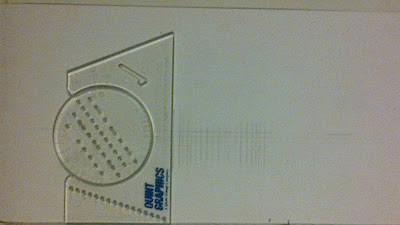Thanks to the convience of digital fonts, creating perfect lettering can appear seemless knowing that you have selected a suitable font. However, sometimes there's something unique and personal when it comes to creating hand lettered words for speech bubbles. It gives off another vibe that compliments the artwork and can take ideas further by exploring certain moods or concepts within the confines of the story.
For those interested in hand lettering or improving upon it, this post is mainly going to be about your new best buddy, The Ames Lettering Guide!
a/s/l?
The Ames Lettering Guide is a nifty looking tool used mainly by architects and makes it so hand lettering is neat and legible. They're quite cheap but can be a bit of a nuisance to track down. I had to purchase mine online after checking out every art shop I could find. I got mine from Quint Graphics on Amazon.
So what you'll need is the guide, a H pencil and a T square.
- To start off, set the size of your lettering using the numbered increments at the bottom of the wheel. For this post, I'll be using 6 which is usually my default setting.
- Next, draw a straight line using the T square. Locate the notch on the far right on the second row of notches on the guide and place the notch over the line you just drew.
- Once you've done that, place the nib of your pencil on the notch to the left of the one on the line and use the T square against the guide to draw a straight line.Repeat this by going down notches on the row until you have enough room.
- Next, confine the area you're working with by creating a box where your text is going to appear. Use the T square again and either the straight or the slanted edges of the guide to make boxes for each of the letters.
- Finally, fill in the lettering all you want.Pencil, ink and do whatever you want at this point!
If you like hand lettering freehand and you have a style set, there's no harm in trying it out as I found that it helps to improve your recognition of kerning and of defining your characters. Great for a practice!








No comments:
Post a Comment